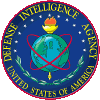

Over the past three decades, Kim Il-song's chuche ideology promoted a self-sufficient, closed society. Military forces that can operate for an extended period without outside support reflect this ideology.
North Korea is nearly self-sufficient in military equipment production; however, it cannot produce aircraft or sophisticated radars and electronic equipment. It has stockpiled enough ammunition, food, and oil in hardened underground facilities to sustain combat for several months without outside aid.
Industry
North Korea's military industry is strong evidence of the regime's policy of self-reliance at any cost --- no other country of equivalent size has such an extensive and complete defense production capability. Along with small arms and munitions, North Korea manufactures its own heavy artillery, tanks, submarines, and high-speed missile boats. Although most equipment copies Soviet designs, Pyongyang produces its own versions of armored personnel carriers, self-propelled artillery, light tanks, and high-speed landing craft.
Infrastructure
North Korean transportation capabilities are adequate to meet current peacetime needs. However, despite
concentrated improvements throughout the transportation network, it has not kept pace with the growth of the
industrial base; the network is barely adequate to support increased demands for transporting raw materials and
finished products. Repair and maintenance support for this expanding system seems adequate. The number of
technically qualified personnel is increasing, and North Korea is importing higher quality equipment and repair
parts.
Road and rail networks follow a general north-south axis, with limited east-west routes, especially in northern areas. Rugged mountainous terrain restricts or channels supply movement to a few routes. Shortages of rolling stock, scarcity of heavy rail lines, and lack of centralized traffic control hamper the rail system. Insufficient roads, poor surfaces, and inadequate maintenance constrain the highway system.
About 75 percent of North Korea's 4,500 kilometers of railroads are electrified. A major logistic goal is to electrify all primary rail lines, which would nearly double the rail capacity without additional track. However, electrification could become a liability during wartime if key grid transformers or hydroelectric plants did not function.
Quality, quantity, capacity, and types of railroad equipment have been improving constantly since the 1950s. North Korea produces both diesel and electric locomotives. Diesel locomotives operate primarily in yards. Most steam locomotives, acquired from various sources shortly after World War II, still operate. North Korea also manufactures several types of railcars, including 60- and 100-metric ton freight cars. Despite these improvements, rolling stock shortages are frequent.
Maritime
North Korean economic plans include upgrading and expanding several primary maritime ports and opening some of them to noncommunist shipping. Constructing the Nampo Lockgate stabilized Taedong River water levels, allowing Nampo Port expansion and facility development farther up the river; Songnim Port is an example of this process.
North Korean merchant ships trade primarily among ports in North Korea and Japan, South Asia, the Mediterranean, and northern Europe. Passenger ships operate between North Korea and Japan. North Korean fishing ships operate relatively close to home waters.
Air
North Korean civil airlift remains limited. In addition to Sunan International Airfield, the Civil Air Administration operates a few domestic flight terminals throughout the country. The only scheduled international routes are between Sunan International Airfield and the Soviet Union and China. Although personnel and equipment assigned to civilian flights do not have a direct military function, they could offer limited support during wartime.
